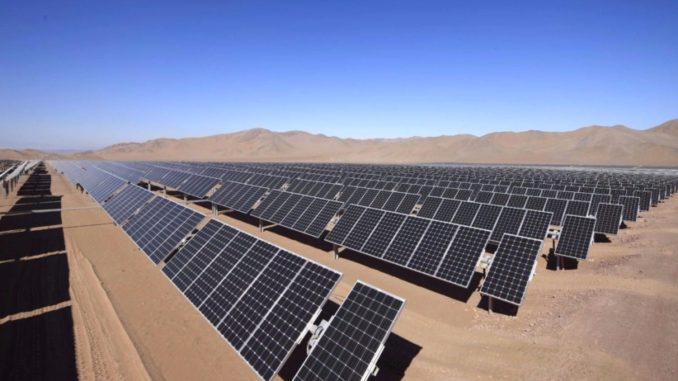
SANTIAGO – The Catholic University of Chile leads pioneering research worldwide in “two-sided” solar panels, a technology that generates 25% more energy than traditional devices and that would make the most of this natural resource. The results were presented at an event sponsored by Imagen Chile, which seeks to promote the solar and radiation conditions of the southern nation to invest in the development of renewable energies.
According to organizers, researchers from the institution’s Energy Center have developed an innovative study that puts into practice for the first time energy production levels of the so-called bifacial photovoltaic modules with other more widespread methods such as polycrystalline silicon and layer fine.
Chile inaugurates 100-MW solar park to power Metro de Santiago (VIDEO)
According to the Vice Dean of Engineering at the Catholic University, Enzo Sauma, research has shown that there is an “innovative alternative for the local and global industry”. Specifically, Sauma added, this new technology differs from the rest in that it is able to take advantage of both sides to receive solar radiation, which translates into “more electrical energy per unit area compared to traditional methods.”
The Atacama Desert, in the north of Chile, is one of the main points for the production of solar energy in that country. It is the driest place on the planet, which not only generates a great opportunity, but also great difficulties. Therefore, the study carried out in Santiago also has a comparative system between the different existing technologies, in order to analyze how dirt in large cities affects the production levels of solar panels.
In the Chilean capital, weather conditions are “standard”, Sauma said, which means that only “5% annual yield” is lost due to the accumulation of dust on the surface of the modules. However, in the desert this figure can increase exponentially if assiduous cleaning of the devices is not carried out, since “the climatic conditions are very hard” and “crusts of earth and dust” are created that make it impossible to obtain radiation solar, added the vice-dean.
To solve this problem, a group of students from the Catholic University presented an idea: automate the process of cleaning the photovoltaic panels, a task that until now is done manually. For this they created a robot that is coupled to the base of the solar panels and that can be programmed to clean the surface of the modules remotely. Even so, the researchers confess, it is necessary to check how often it is necessary to carry out these cleaning tasks, in order to optimize the system as much as possible.



